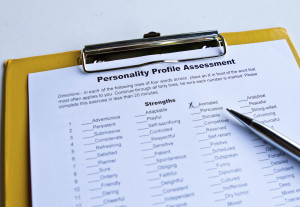What’s new in pre-employment assessment? The answer may surprise you.
The talent assessment industry is thriving with growth expected to double by 2020. The value of pre-employment testing as well as leadership assessments is well-documented and less than half of the approximately 50 million hires made yearly in the U.S. are tested. According to Dr. Charles Handler, “there is an increasing amount of evidence that companies with solid, well-executed Talent Assessment programs outperform those who don’t.” All those reasons point to a golden age for pre-hire assessment.
Unfortunately, most employers and HR professionals lack the understanding and experience required to reap the benefit. Handler, one of the most respected and innovative thought leaders in the talent assessment space, believes “most talent assessment programs are clumsily executed bolt‐ons  .”
.”
I tend to agree that pre-employment testing is often an after-thought. Choosing an assessment is akin to trying another flavor of ice cream on a hot summer afternoon because you’re bored with vanilla. Testing is a last ditch effort to fix everything else that isn’t working in the hiring process. It’s implemented as a band-aid, not a strategy.
The problem facing the assessment industry shouldn’t be shouldered by companies alone. The industry deserves a lot of blame for low acceptance and poor engagement. It has been noticeably slow to adapt to disruptive changes in the workforce and labor markets.
For starters, nearly half of all jobseekers use a mobile device to apply for a job. But today’s job applicant is forced to endure pre-hire testing designed to be completed on paper or a desktop computer. Few pre-hire assessments are optimized to be completed on a mobile device such as a smartphone or tablet. A growing gap exists between the assessment items and mobile capabilities. When attempting to attract Millennials and other tech-oriented workers, mobile optimization is not just desirable, it’s a necessity.
But the pre-hire test industry isn’t only struggling to meet expectation in the way tests are delivered. While pre-hire assessments still offer significant value to employers, the very essence of traditional pre-employment testing – a series of carefully selected questions selected to predict future behavior and performance – is losing relevance.
It is my prediction that as early as 2020 new technological advancements will change the way employers screen and hire. For the last century, psychologists and scientists have squeezed traditional testing to extrude the best possible result. But the stakes for making the right hiring decision and avoiding mistakes is higher than ever. Besides, the velocity of change is accelerating and its trajectory of that change is much steeper. Within this new environment, improving the status quo won’t get the results that both employers and job applicants demand.
The time is fast approaching when the traditional pre-employment test as we know it will become as useful as using a typewriter to search the Internet. Assessment providers will be forced to change both the structure and delivery of employee tests to provide more precision and user-friendly experiences. Watch for significant advancement in the field of pre-hire assessments over the next 5 to 10 years driven by these three factors:
Predictive Analytics. Moving forward, the employment testing industry will be disrupted by advancements in technologies and tools such as artificial intelligence and data mining. Testing applicants and employees will shift from an “active” model to “passive. “Passive” assessments will not look like tests at all and will have a very low impact on job applicants’ time and attention. In the passive model, a profile will be collected from data using ongoing interactions by and with candidates; much like the insurance industry collects data from motorists.
Social Job Matching. Social media data is already an integral part of hiring, especially for companies recruiting skilled works, the tech-savvy, and Millennial generation. Employing social media to source and screen applicants of course sends up red flags for violations of privacy, EEO, and ADA. But the genie is already out of the bottle there’s no putting her back in. While new technologies will all but guarantee discrimination and privacy challenges, laws and regulations will be revised and rewritten to meet the contemporary workplace. If not, employers will be crippled in their ability to source, recruit, and hire workers.
Gamification. Virtual reality and other forms of interactive assessment are already starting to transform the pre-hire assessment industry. Currently they lack validation and reliability. But by blending the science of psychometrics and artificial intelligence with the art of social media, assessment tools that are engaging, relevant, and scientifically sound will emerge. Watch closely in the next few years for the emergence of gamified psychometric assessments that predict job fit with better precision and meets the engagement expectations of demanding candidates.
